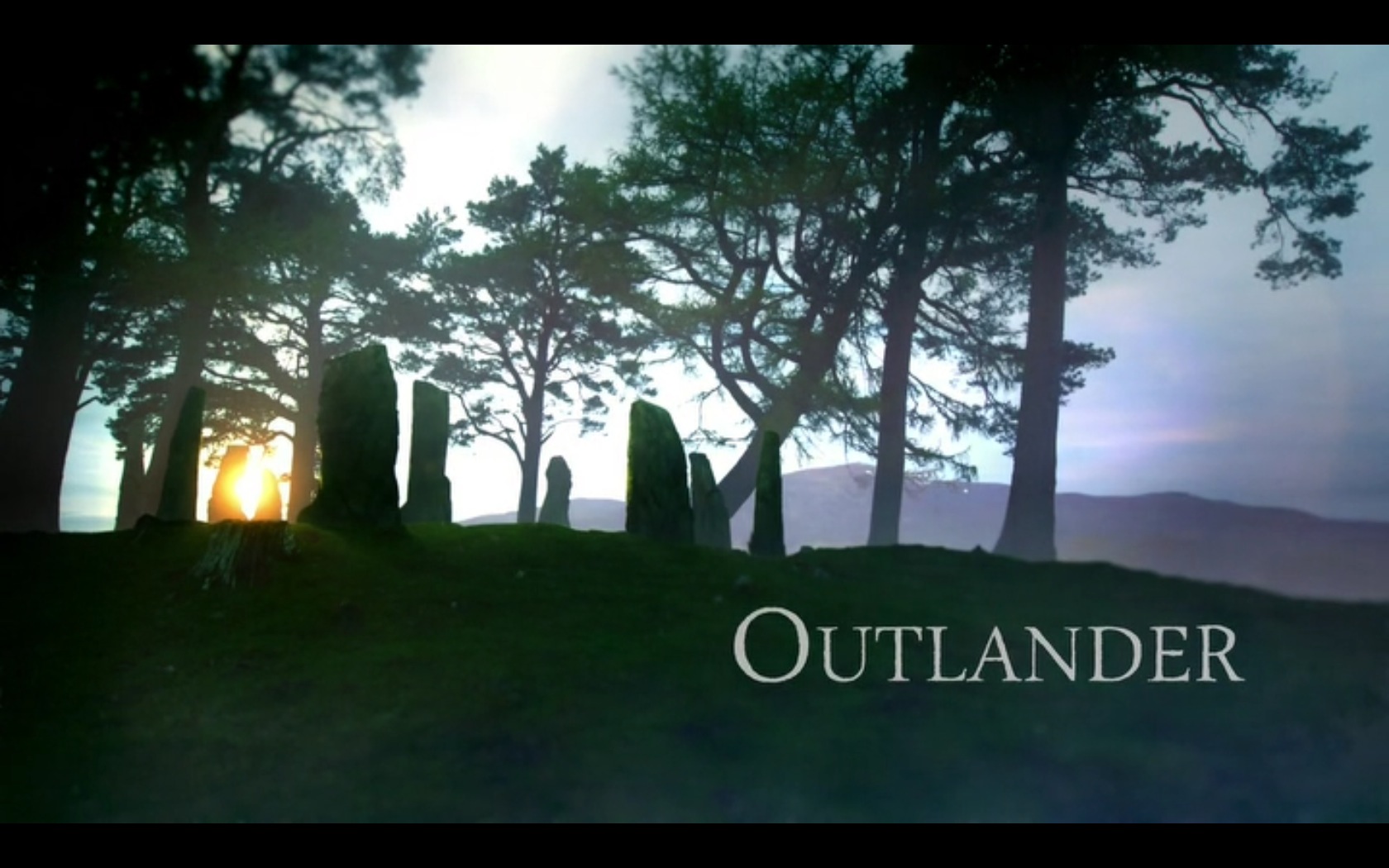By Benny Paul

Outlander, just renewed for a second season on Starz, is a show full of great images and ideas that is just starting to gain momentum. Based on a popular series of historical-fantastical novels by Diana Gabaldon, Outlander opens in 1945, with a just-reunited English couple, Claire and Frank Randall, taking a vacation to rural Scotland, but soon Claire finds herself transported to the year 1743, and must adjust to life in rural Scotland while looking for a way home.
In the pilot, we learn that Claire (Caitriona Balfe), who also narrates, spent World War II as a nurse, and that Frank (Tobias Menzies) was a spy. The show flashes between the calm, cobblestoned Scottish village to gory snippets of Claire treating a bleeding soldier. This introduction gives us roughly what to expect from this show’s universe: idyllic, beautiful scenery intercut with brutally realistic violence.
The show’s spectacular visuals have that saturated, intensely colorful look that is often associated with old Technicolor film from the 40s, but it also has a clean crispness that could only come from the contemporary digital era. The different shades of green in the Scottish forests–from deep emerald to a bright, almost tropical hue–are captured so vividly it puts Braveheart to shame. Outlander could do for Scotland what Lord of the Rings did for New Zealand. Even the overcast skies look pretty, the clouds silver rather than gray. After Outlander, I almost found it hard to look at other less beautiful TV shows.

Claire (Caitriona Balfe) before she goes back in time.
But Outlander, visually lovely as it is, takes a while to get off the ground. The show’s main premise is that Claire travels back in time from 1945 to 1743, but this doesn’t happen until nearly halfway through the pilot, giving us just enough time to get used to 1945, but not quite enough to get used to 1743. It’s an awkward start, but luckily the show has time to improve.
When Claire first traveled back in time, I couldn’t help but think of another show featuring a modern character sprung into the past: Life on Mars, the popular BBC series (which was then made into a much less popular American series on ABC) about a Manchester detective who is sprung from 2005 to 1974. In Life on Mars, the premise is established much more swiftly: soon enough, the protagonist is solving crimes and fighting bad guys in 1974, all the while trying to figure out how to get back to 2005.
But Outlander takes a longer time to get going. Early on, we suspect that the show will be about Claire and the Scotsmen fighting the British, but the villainous redcoats (convenient villains for an American audience) soon recede into the background, and the next few episodes mainly concern her daily life among the 1700s-era Scots. Some of the clan are charmed by this “outlander” with her funny accent and unusual knowledge of medicine, while others accuse her of being a British spy and a witch. For the most part, the fun of the show is in getting to know the ins and outs of this old world along with Claire. While the first few episodes have neither self-contained plots nor cliffhanger endings, they do give us time to appreciate the world-building as we’re fully immersed in 1743 Scottish life.

Much has already been written about Outlander’s sexual politics, which, in my opinion, overshadows some of the show’s much more interesting qualities. Outlander is a show with a decent amount of sex and nudity, but it never pandered to my most basal male desires with gratuitous shots of servile women showing their bodies to powerful men. Claire has taken her clothes off several times this season, but she has yet to do it out of desperation, fear, or weakness. It’s a respite from Game of Thrones and other premium cable shows, and a rare sight in television today: boobs without submission. In addition, Outlander seems to have little respect for the type of men–celebrities, monarchs, crime lords–who receive that submissive attitude from women. The entitled men in Outlander are all portrayed as confused or insecure. Instead, the men who get the most screen time–and the most female attention–are not the ones with the most power, but the rebellious ones who appear not to care what powerful men or women think of them.
A few episodes in, the show does get a bit more focused, as Claire learns that there may be a portal back to the 20th century. Hopefully, the show will not stray too far from this premise in future episodes, and I hope that it will continue down this plot-driven path while still leaving room for us to explore the nuances of its setting and characters. In the end, though, more than just setting is needed to keep us engaged. Why was Claire sent through time? Can she get back to the 20th century? And, most importantly, if she can go back, will she want to? These are the questions we want answers to, and if Outlander starts providing them, then it may become a great show indeed.
Outlander is on Starz Sundays at 10 EST.
Benny Paul is a Brooklyn-based writer in the sense that he lives in Brooklyn and writes sentences. He has a degree in Literary Theory and Film Studies from SUNY Albany. He is also the creator of the blog YoungUrbanAmateur.com. It is mostly about musicians, unlike his Twitter account, which is mostly about Major League Soccer.

Good review. I’m also enjoying the show and the beauty that is the Scottish countryside. One minor correction: The show airs Saturday nights at 10 PM.